Jim Clark Museum: A pilgrimage home11 | 04 | 2022
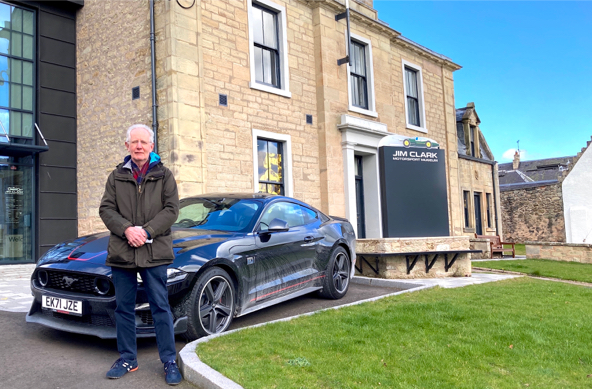
The Jim Clark Motorsport Museum in Duns is a pilgrimage that every motorsport fan should make. Veteran Scots motorsport journalist HUGH HUNSTON (pictured above) — who as a young man was delighted to get Jim Clark’s autograph at Ingliston in 1964 — travelled the 400-miles from his home in Oxfordshire behind the wheel of a new Ford Mustang to savour the experience and memory of a sporting legend
THERE IS NOTHING MAWKISH or indulgent about the airy, bright and inspirational Jim Clark Motorsport Museum, blending honey-coloured sandstone with a floor-to-ceiling black glass frontage, sitting confidently on the A6105 as you drive into the Berwickshire county town of Duns, writes Hugh Hunston. (Related: Mustang marvel to Jim Clark Museum)
Upgraded and expanded in August 2019, 50 years after the original modest room housing Clark’s myriad collection of trophies opened, the centre provides a fitting testimony to the life, times and remarkable achievements of arguably the world’s greatest ever racing driver. (Related: Jim Clark: The Legend Lives On)
Do not take my admittedly partisan word for that description of the modest Scottish sheep farmer who was a global sporting superstar before the term became a tired cliché. Brazil’s Ayrton Senna, a visitor to the original trophy room and Clark’s alma mater, Loretto School in Musselburgh, described Clark as his boyhood hero, “the best of the best”. While Argentinian Juan Manuel honoured him as the greatest racing driver ever.
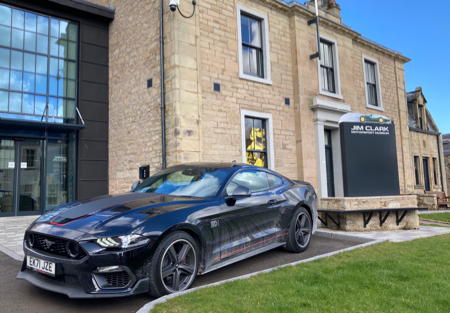
Perhaps Clark’s racing contemporary and friend, Sir Jackie Stewart’s testimony is most apt. “He was the best. Shy, almost introverted, modest. He was a Borders farmer after all. And he never stopped being a Borders farmer.”
I made the 400-mile pilgrimage from deepest Oxfordshire with fellow Clark devotee and automotive writer Peter Nunn at, for various reasons including Covid19, the third time of asking.
It was well worth the wait and little wonder that this erstwhile shrine, arguably too morose a term, attracts upwards of 1000 visitors a month between April and November.
The Jim Clark Trust, with backing from The Heritage Fund, Scottish Borders Council and Live Borders, has created a balanced, candid and illuminating insight into the all too short life of a sportsman whose enigmatic appeal endures 54 years after his death at the age of 32. (Related: Jim Clark museum plan gets green light)
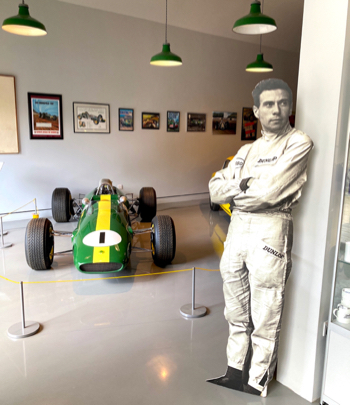
Pride of place in the museum’s foyer is taken by three cars: the 1963 world title-winning Lotus-Climax 25, Jim’s personal canary yellow Lotus Elan and the Lotus 23 sports racer.
It is the latter that encapsulates Clark the driver. A car in which he outclassed the might of Ferrari and Porsche works teams at the daunting 14-mile Nurburgring in the diminutive lightweight 100-horsepower two-seater before a cracked exhaust manifold and resulting fumes forced his retirement from a commanding lead.
The museum’s curators apply a rotating approach to the display of his cars, which previously included an original Clark Lotus-Cortina racer, the coveted property of fellow former Indy 500 winner Dario Franchitti. (Related: Dario Franchitti lives his Jim Clark dream)
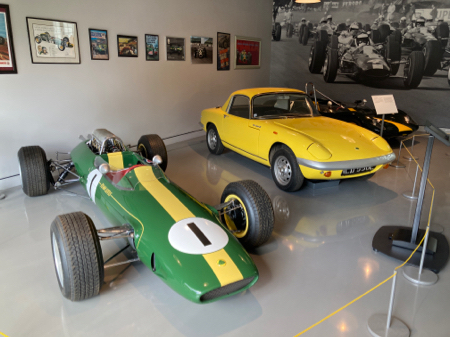
Perhaps one of the most significant parts of the Clark collection of memorabilia, excellent audio-visual material and personal background material, is a list of cars he drove and categories he contested.
Not just the elite Formula 1 machinery or the mould-breaking Lotus-Ford 38 1965 Indianapolis 500 winner, in a year when he captured both the Grand Prix title and American blue riband event. But cars like the unwieldy Lotus 30/40 CanAm sports cars, fragile Formula 2 machinery, plus the monstrous Detroit-sourced Ford Galaxie saloon car and the classic Lotus Cortina that took him to the 1964 British Touring Car Championship. (Related: Jim Clark — The Indy500 Ford Story)
Clark’s versatility extended to renewing early career involvement with rallying on the 1966 RAC Rally where, having practised assiduously, the Borderer ran as high as sixth overall and registered three special stage wins before rolling out on the Glengap section.
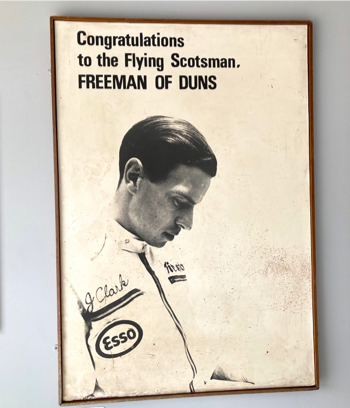
After retiring from the event, he confided that analysis of the accident meant he would have avoided making the same driving error again and rather than head for the nearest warm hotel, the then double F1 world champion joined the service crew happy to help out Ford’s support team in the dank winter forests.
Lurking among that eclectic list is the answer to the ultimate motorsport pub quiz trivia question about track racing cars driven by a unique talent. The Felday-BRM, an effective two-litre sports car complete with all-wheel-drive in which Clark enjoyed a freelance outing during 1966.
While today’s F1 luminaries rarely stray beyond the cosseted confines of Grand Prix paddocks, albeit in a series with far more races than the single digit championship of the 1960s, perhaps the multi-discipline environment Clark contested exposed him to heightened risk.
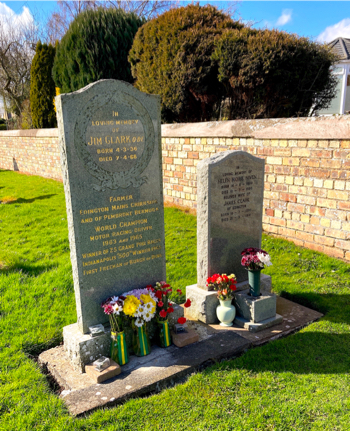
Jim Clark and Lotus team-mate Graham Hill were not released by Lotus boss Colin Chapman from their commitment to contest the fateful Formula 2 race at Hockenheim. The racing duo had also been offered the opportunity to share Ford’s new P3 F3L at the Brands Hatch 1000km sports car race on April 7, 1968, the day Clark died in the F2 race at the German track.
But ironically, a crash involving the Ford just one month later nearly claimed the life of promising F1 driver Chris Irwin. He suffered life-changing head injuries when the car flipped upside down at the Nurburgring. Irwin never raced again.
It is to the credit of those who put together the museum that it does not skirt the trauma behind Clark’s death, which sent seismic waves through the motorsport community and far beyond.
One particularly graphic video shows the aftermath of the Hockenheim crash with Graham Hill helping crestfallen Lotus mechanics recover the mangled Lotus wreckage from among the unprotected trackside trees.
By contrast, there is heartening footage of Duns’ ultimate local hero tending his shepherd’s flock in and around Edington Mains, where he maintained such a contrasting lifestyle.
The ability to keep that balance was enabled by Clark flying himself to and from English and European circuits, plus Lotus’s Norfolk headquarters, in his Piper Comanche aircraft, using nearby Winfield Airfield, itself a racing track where the nascent talent was nurtured.
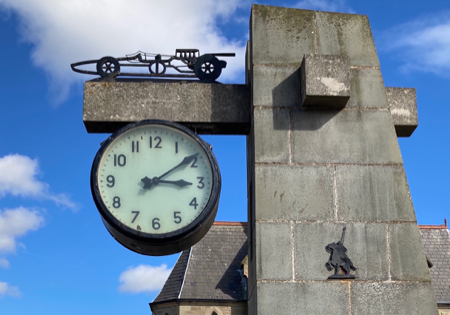
According to the museum background literature, the venue attracted a peak of up to 50,000 spectators and entry lists included stars like Stirling Moss.
The enterprising people behind the museum have created the Jim Clark Trail, involving a five-point circular driving route starting at the centre and covering Chirnside, where his modest grave carries the inscription “Farmer Edington Mains”, before secondly acknowledging his world champion status.
The route moves on to Berwick Upon Tweed, location for the local motor-racing club, and passes Winfield before heading to Charterhall Airfield, initially Scotland’s longest-lasting racing venue.
Our trip to the early heartland of Scottish motorsport, in an area which fostered outstanding talent including the late endurance rally star and fellow farmer, Andrew Cowan, plus female rally world champion Louise Aitken-Walker, had one particularly rewarding co-incidence.
A visit to the nearby and appropriately themed Jim Clark Café bistro, in Duns’ market square, resulted in coming across Clark’s mentor and early advocate Ian Scott-Watson, and the world champion’s cousin Doug Niven, a beef farmer and no mean special saloon car racer in his time.
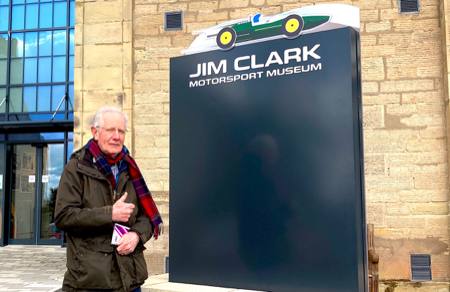
As with the museum, the linked bistro bears the hallmarks of a restrained, dignified stewardship of Jim Clark’s lasting memory, which extends well beyond those of us of a certain age and experience.
My own memories of a driver who remains revered across generations range from nervously getting his autograph on my coveted copy of his autobiography, at a 1964 Ingliston karting meeting; watching him recover from a 360-degree, 150mph spin at Indianapolis in a difficult Lotus via satellite at Edinburgh’s Lyceum cinema; to witnessing Chapman’s aircraft bring Duns’ most famous son home for the last time via Turnhouse Airport the day following that fateful crash.
If whatever racing car he was driving was competitive and reliable, Jim Clark usually won the race, which makes this quote from the reluctant hero all the more poignant.
“I have always recognised and respected the safety limits for myself and other drivers, and I would far rather lose a race any day than overstep myself or my car.”
CLARK’S F1 STATS:
For many years, Jim Clark’s 34.7% ratio of Grand Prix victories, 25, to the relatively few (72) races he contested was eclipsed only by Juan-Manuel Fangio on a towering 47%.
By the end of last season, seven-times world champion Lewis Hamilton overtook Clark in the success frequency stakes on 36%, a figure which has doubtless been diluted by the Mercedes driver’s current challenging season.
What characterised Clark’s dominance, particularly during his 1963 and 1965 world championship campaigns, were his achievements of seven victories out of 10 races and six from 11 respectively. Impressive while Hamilton’s hit list is it comes in the context of 20 plus Grand Prix each year.
Jackie Stewart racked up 27 from 99 F1 championship races, which computes to just over 27%
Photographs: Peter Nunn and Lewis Hunston